Carbonyl Compounds
This lesson covers:
- The carbonyl group in aldehydes and ketones
- Synthesising aldehydes and carboxylic acids from primary alcohols
- Synthesising ketones from secondary alcohols
- Oxidation of aldehydes to carboxylic acids
- Reduction of aldehydes and ketones to alcohols
- Hydroxynitrile formation
Aldehydes and ketones contain a carbonyl group
Aldehydes and ketones are both carbonyl compounds, meaning they contain a carbon-oxygen double bond called the carbonyl group.
The key difference lies in the position of this functional group:
- Aldehydes have their carbonyl group at the end of a carbon chain. Their names end in -al.
- Some common examples of aldehydes are:
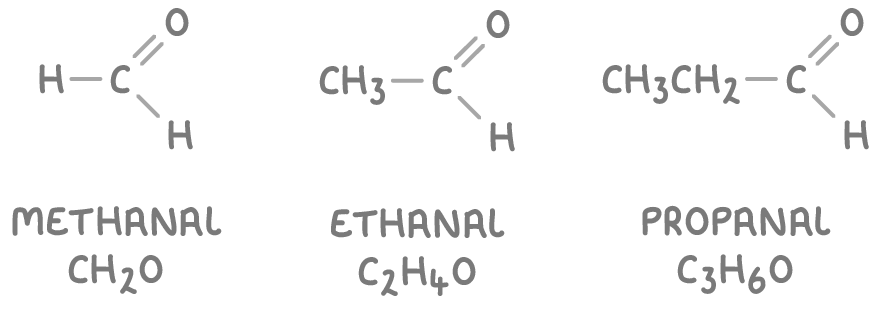
- Ketones have their carbonyl group within the carbon chain. Their names end in -one and often have a number indicating the carbon with the C=O group.
- Some common examples of ketones are:

Oxidising primary alcohols to aldehydes and carboxylic acids
Primary alcohols can be oxidised to aldehydes and further to carboxylic acids using acidified potassium dichromate(VI) (K2Cr2O7) as an oxidising agent.
The oxidation reactions are:
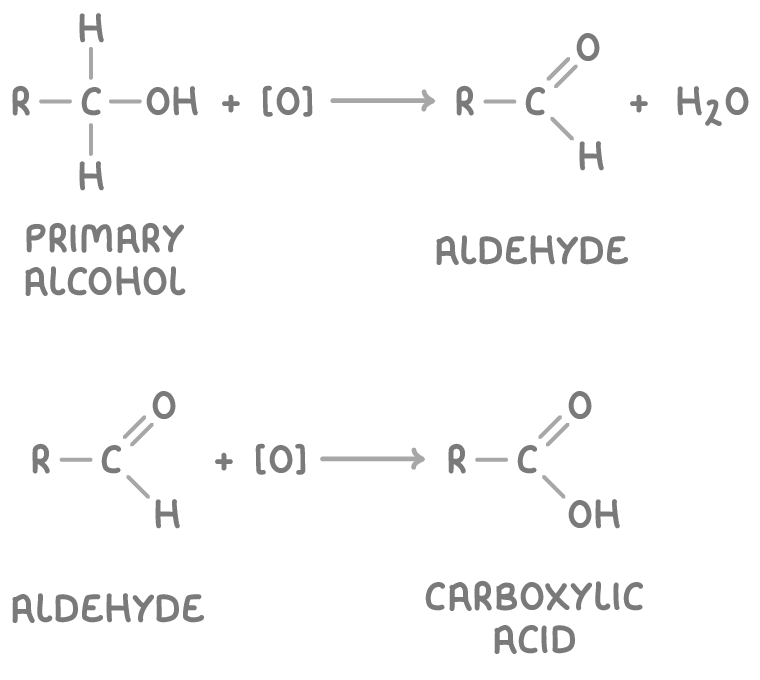
Where:
- [O] represents the oxidising agent.
- R is an alkyl group.
The orange dichromate(VI) ion (Cr2O72-) is reduced to the green chromium(III) ion (Cr3+) during these oxidation reactions.
Controlling alcohol oxidation to get aldehydes or acids
You can control how far primary alcohols are oxidised by using different reaction conditions:
- Gently heating the alcohol with acidified K2Cr2O7 in a distillation set-up stops at the aldehyde product.
- Refluxing the alcohol (or aldehyde) with acidified K2Cr2O7 continues the oxidation to the carboxylic acid.
Oxidising secondary alcohols to ketones
Ketones are produced when secondary alcohols are oxidised with acidified K2Cr2O7.
The oxidation reaction is:
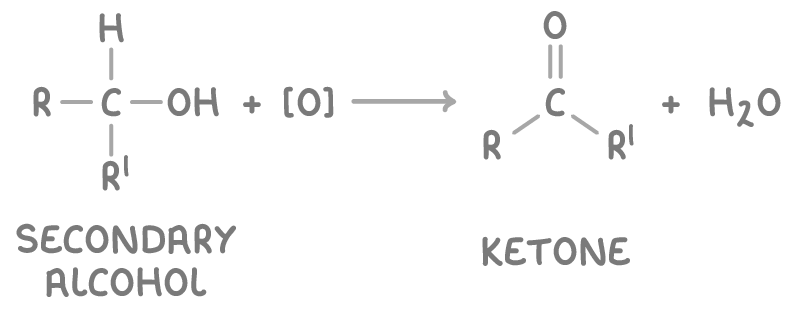
- [O] represents the oxidising agent.
- R and R’ represent alkyl groups.
Ketones cannot be oxidised further by acidified K2Cr2O7.
Aldehydes are easily oxidised to carboxylic acids
Aldehydes can be oxidised by oxidising agents such as acidified potassium dichromate(VI) to form carboxylic acids. The colour change observed during this oxidation is from orange to green, as the Cr(VI) in the dichromate ion is reduced to Cr(III). However, ketones do not undergo oxidation under the same conditions, so colour change is seen.
For example, methanal is oxidised to methanoic acid:
HCHO + [O] ➔ HCOOH
By contrast, propanone does not react with oxidising agents:
CH3COCH3 + [O] ➔ no reaction
This difference in reactivity occurs because the hydrogen atom attached to the carbonyl carbon in an aldehyde is weakly acidic, so it is easily displaced. By contrast, ketones lack that weakly acidic hydrogen, so oxidation does not occur.
Reduction of aldehydes and ketones to alcohols
Aldehydes and ketones can be reduced to primary and secondary alcohols respectively using reducing agents like sodium borohydride (NaBH4) dissolved in a mixture of water and methanol.
Carbonyl compounds undergo nucleophilic addition reactions because the carbonyl carbon is electrophilic due to the polarisation of the C=O double bond, which makes it susceptible to attack by nucleophiles.
The reduction reactions are:
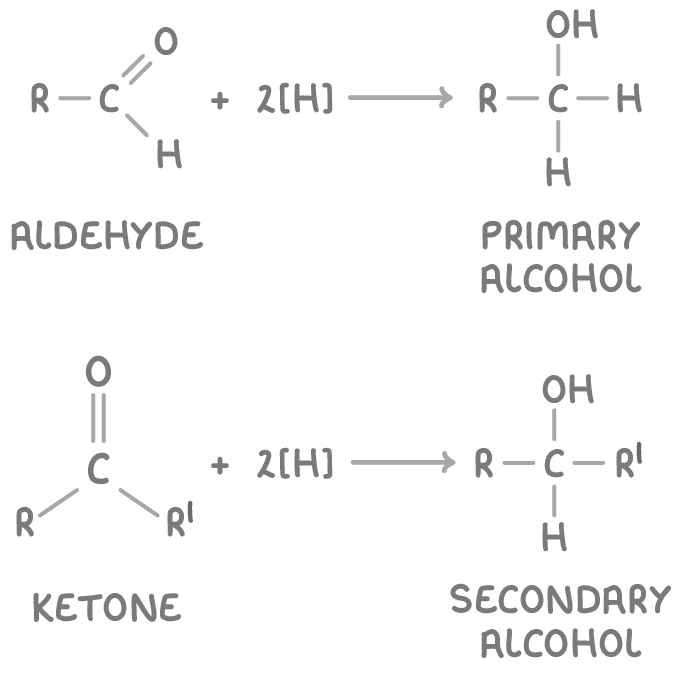
Where:
- [H] represents the reducing agent.
- R and R’ represent alkyl groups.
Mechanism of carbonyl reduction
The reduction of carbonyl compounds, such as ethanal, to alcohols follows a nucleophilic addition mechanism:
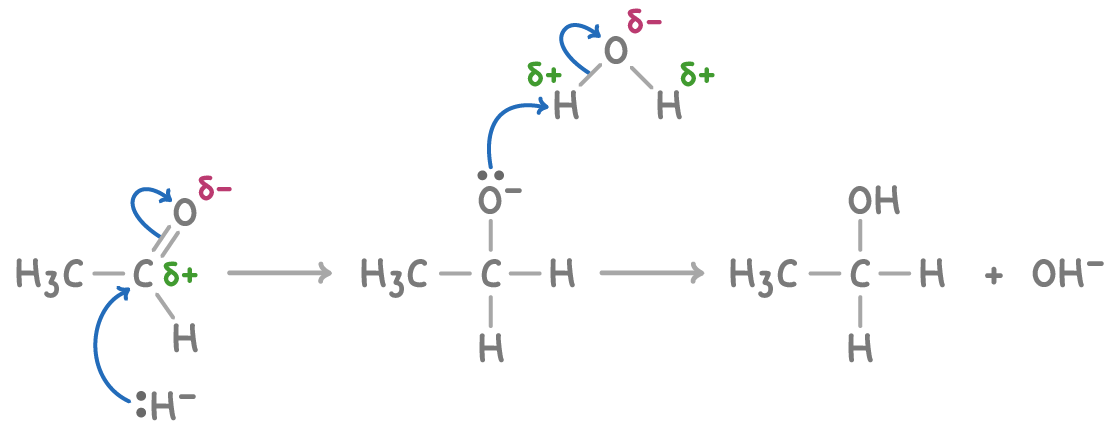
- The reducing agent provides hydride ions (H-) which act as nucleophiles.
- The hydride ion attacks the partially positive carbonyl carbon, forming a new C-H bond.
- Protons from the solvent, such as water, are added to the oxygen, forming the hydroxyl group (-OH).
Aldehydes and ketones form hydroxynitriles
Aldehydes and ketones can react with hydrogen cyanide (HCN) in nucleophilic addition reactions to produce hydroxynitriles which conains both the cyano (-CN) and hydroxy (-OH) substituents. This reaction is useful because it increases the length of the carbon chain by 1 carbon atom.
The reactions are:
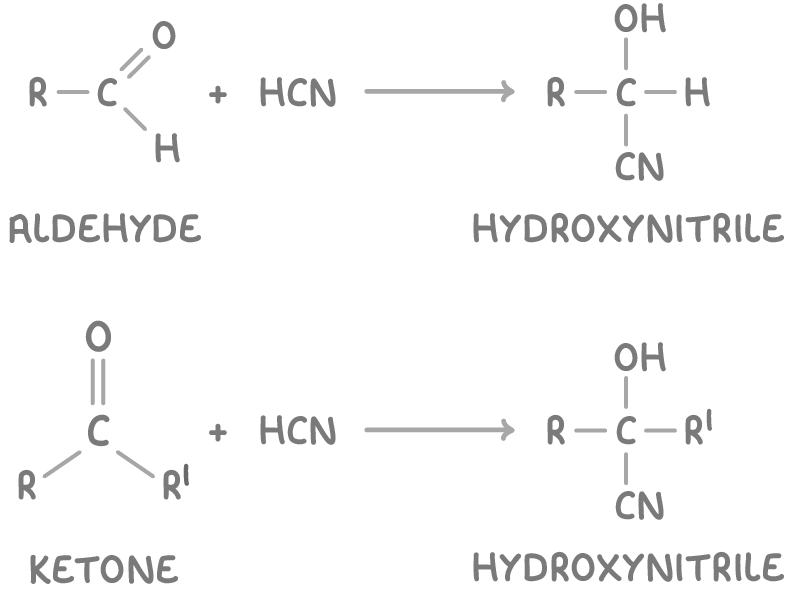
Where
- R and R’ represent alkyl groups.
Hydrogen cyanide is toxic so it is often generated in situ by mixing sodium cyanide or potassium cyanide with sulfuric acid.
Mechanism of hydroxynitrile formation
The formation of hydroxynitriles from carbonyl compounds, such as ethanal, follows a nucleophilic addition mechanism:
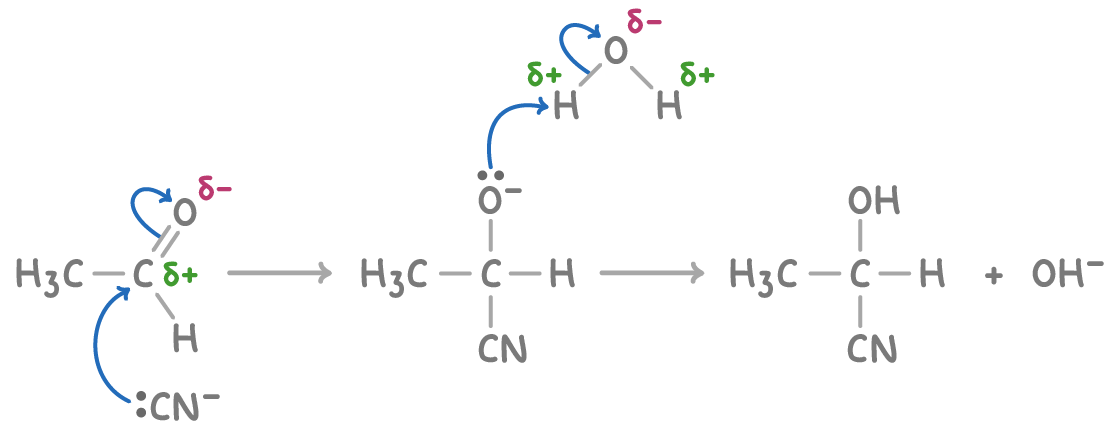
- CN- attacks the partially positive carbonyl carbon, transferring the electrons to oxygen.
- Protonation of oxygen by water (or acid) to give the -OH group.